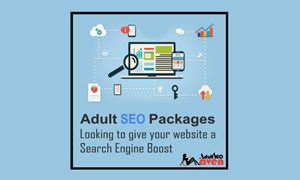The Ultimate Website Redesign Checklist 2017
 In any online business, having an outdated website is no less than a curse. Time flies, and the latest trends kick in faster than you would expect. As a result, websites become outdated seemingly overnight.
In any online business, having an outdated website is no less than a curse. Time flies, and the latest trends kick in faster than you would expect. As a result, websites become outdated seemingly overnight.
When it comes to commercial websites, “leaving well enough alone” is far from good enough. Consumers and Google expect sites to meet new standards as soon as those standards appear. Redesigning to keep up — hopefully, even get ahead of the curve — should become a way of life for anyone who’s serious about making money online.
The most common mistake developers commit is jumping straight into a redesign without establishing specific goals. Much like starting a new business, the redevelopment process requires precision and patience in order to determine the relative costs and benefits of several options and which may provide the best return on investment.
When considering a site redesign, ask yourself two questions:
Why does the website need a makeover?
What are the goals for the redesign?
The answers will make the work ahead easier by providing a clear purpose.
Once clear goals are in place, take the next steps.
Metrics that matter
Analyze the crucial parameters that define the success of your website. Some of the metrics to consider are site traffic, sales, conversion rate, search ranking, unique and repeat visitors, bounce rate and the time the average user spends on various pages. Studying the server logs and sales reports will provide valuable insight into which areas of the website could be improved to make the biggest impact.
Know the user base
Knowing the target audience is imperative. Who are they? In what age range do they fall? What do you know about income and education levels? Where do they live: urban, suburban or rural? Are they married with children or single? You can never have too much information about your market’s demographics. The more you know about your target, the more precisely you can pinpoint your ideal customer with keywords that demand attention.
Set goals
As the famous saying goes, “If you fail to plan, you plan to fail.” To achieve your goals, you must know what they are. The metrics you gathered earlier will prove very useful in analyzing where the website could use improvement and where it works well.
The design
Your website represents your brand. Make sure the design and the site’s content deliver what customers seek. No matter how pretty or high-tech a design, if the website doesn’t offer content consumers want, they won’t stick around. Always remember a website redesign is for the people who will make it a success: customers.
The competition
It is always an advantage to know your enemy. If you are redesigning your website because you are not getting the desired traffic, then you need to target the websites that are. Take a look at your competition through a consumer’s eye. What is your competition offering that you are not? How does their website work? Are there any “trigger mechanisms” you could emulate — or improve upon — to give your site an edge?
Content strategy and SEO
There is no better time to revise your content strategy than during a site redesign. Add new material, or at least reorganize what already exists in a way consumers will find more intuitive or more intriguing or just “different.” Often, simply moving the furniture makes a place look entirely new, so don’t be afraid to change categories or archive old material you can bring back out later and call “classic erotica.”
An SEO plan is crucial at this point, too. Analyze popular keywords related to your content and look for phrases that may not have applied before but do now that the site has a new look and feel.
Last but not the least, do not forget to optimize for mobile users. Ensure the new design is compatible with most web browsers and offers a user-friendly interface.
Sean Gough is an expert adult marketing consultant with more than a decade of experience in the online adult industry. He is the chief executive officer for Adult SEO Maven.
Image © Stiven.












